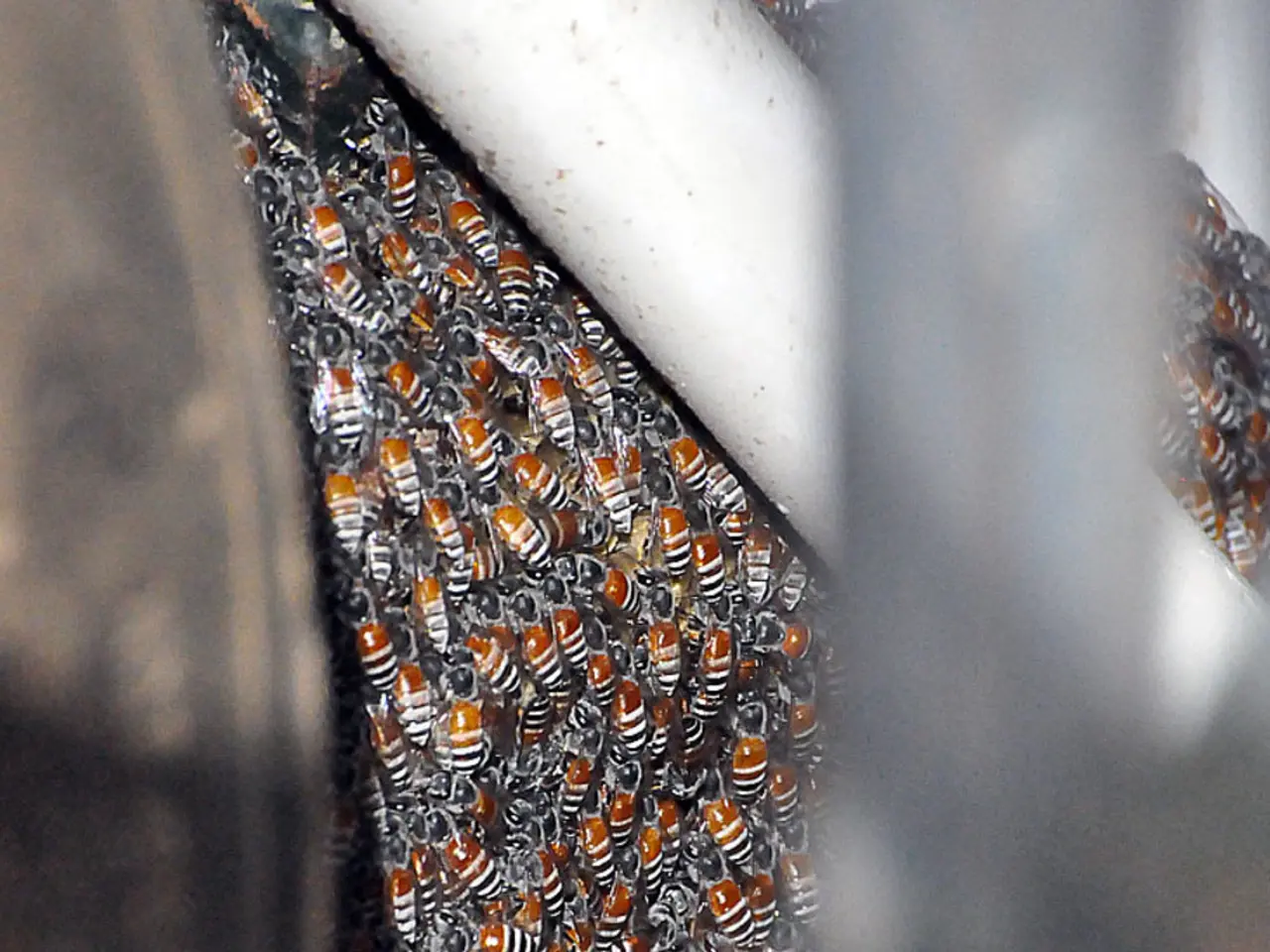Honeybee population decline controversially may not be as severe as originally thought
The State of Honeybee Health: Challenges and Recovery
Honeybees, crucial pollinators for food production, have been a subject of interest for the author since 1998. Over the years, their health has shown mixed trends, with significant challenges and recent recoveries.
In the UK, over 40% of pollinator species have become less widespread since the 1980s. This downward trend is not unique to the UK, as honeybee colonies have faced severe losses in recent years, particularly in the US. In 2024-2025, American beekeepers experienced the highest documented rate of colony losses, with around 55.6% of colonies disappearing. Some commercial operations even reported up to 90% loss, marking the largest die-off in U.S. history for honeybees [2][3].
Key factors contributing to honeybee declines include Varroa mites and associated viruses, erratic weather and climate effects, supply bottlenecks of quality queens, chemical exposures, and antibiotic use changes.
Varroa mites, which spread viruses and have developed resistance to main treatments, are widely recognized as a primary driver of recent colony collapses [2][3]. Unpredictable flowering times and bee foraging disrupted by La Niña patterns have also stressed colonies. Climate change and warming trends contribute to habitat loss and reduced forage availability [3][4].
A shortage of robust queen bees from leading production states exacerbates colony decline and recovery difficulty. Pesticides and synthetic chemicals used in agriculture continue to harm bees directly or indirectly by reducing habitat quality [2][4]. In Canada, reducing antibiotics has surprisingly been linked to higher overwinter mortality, potentially due to antibiotic overuse and evolving microbial dynamics [5].
Despite these challenges, data from 2025 suggests some improvement in colony numbers due to beekeeper interventions like requeening and adding nucleus colonies (colony splits) to renovate hives. USDA reports show hive additions have outpaced losses in the most recent quarters, indicating efforts to revitalize are having an impact [1].
The public can help support wild pollinators by creating pollinator-friendly habitats. Growing native flowering plants that bloom throughout the growing season provides continuous forage. Reducing or eliminating the use of pesticides and herbicides harmful to bees and other pollinators is also essential. Supporting diverse habitats, such as meadows, hedgerows, and woodlands, helps maintain a healthy ecosystem for pollinators.
Leaving bare soil patches, dead wood, and plant stems for nesting wild bees provides suitable nesting sites. Raising awareness and supporting policies that protect pollinators, such as pesticide restrictions and habitat conservation initiatives, can further help these vital creatures.
Public efforts, aligned with scientific, agricultural, and policy reforms aimed at reducing chemical use, breaking agricultural monopolies, and adopting regenerative farming practices, can create a more resilient environment for all pollinators [2][4]. It's important to remember that honeybees are not the problem here, but they have health problems common in farmed species.
CCD, characterised by the majority of worker bees disappearing from hives, leaving the queen, eggs, larvae, and a few bees to care for them, was first reported in the mid-2000s. The cause of CCD is not entirely clear, but it is believed to be a combination of factors including disease, habitat loss, pesticide use, and intensive management by beekeepers.
People's knowledge about honeybees is often limited to basic facts like they make honey and live in hives. The majority of honeybees live in hives provided by humans, allowing for easy relocation and honey harvesting. Understanding the complexities of honeybee health and the threats they face is crucial for their survival and the continued production of food we rely on.
- The author's interest in honeybees dates back to 1998, as they are crucial pollinators for food production.
- Over the years, the health of honeybees has shown mixed trends, with significant challenges and recent recoveries.
- In recent years, honeybee colonies in the UK and the US have faced severe losses, with the highest documented rate of colony losses happening in 2024-2025 in the US.
- Varroa mites, erratic weather, climate effects, supply bottlenecks, chemical exposures, antibiotic use changes, and habitat loss are some key factors contributing to honeybee declines.
- Data from 2025 suggests improvement in colony numbers due to beekeeper interventions like requeening and adding nucleus colonies, with hive additions outpacing losses.
- To support wild pollinators, people can create pollinator-friendly habitats, reduce or eliminate harmful pesticides, and support diverse habitats.
- Understanding the complexities of honeybee health is crucial, as people's knowledge about honeybees is often limited, and they face various threats that can impact food production and the environment.




